Two major new aerospace partnerships have been launched in Asia, one in South Korea, the other in Singapore, to help progress the introduction of carbon neutral fuels for domestic and international air services, reports Tony Harrington. Hydrogen propulsion is the focus of collaboration in Korea between Korean Air, Airbus, Incheon International Airport Corporation (IIAC) and the French industrial gases group Air Liquide, which have joined forces to investigate the infrastructure required to support future zero-emission aircraft. The Civil Aviation Authority of Singapore (CAAS), Singapore Airlines (SIA), the state investment company Temasek, ExxonMobil and Finnish-based waste-to-fuel producer Neste have announced a pilot programme to introduce sustainable aviation fuel in Singapore from the end of July this year. Meanwhile, Airbus is forecasting a strong rebound in Asia-Pacific air traffic post-Covid, returning to 2019 levels between 2023 and 2025, and growth of 5.3% per annum over the next 20 years. This will be accompanied by the replacement of older aircraft to support the industry’s decarbonisation objectives, foresees the plane maker.
In Korea, the parties have signed a detailed Memorandum of Understanding through which Airbus will provide characteristics of hydrogen-powered aircraft, the expected energy volumes required to operate fleets of these new planes and the ground infrastructure they will need. Air Liquide will bring expertise in the production, liquefaction, storage and distribution of hydrogen fuels, while IIAC will provide an airport development plan, initially based on air traffic and distribution among terminals at the Incheon hub in Seoul, and Korean Air will focus on operational requirements including ground handling of hydrogen-powered aircraft, maintenance and flight operations.
“In the coming years, the Korean aerospace ecosystem will have to adapt to new fuels and new distribution channels,” said Anand Stanley, Airbus President Asia-Pacific. “Airbus and its partners need to be coordinated to ensure we will be ready. Together, we will prepare a roadmap to first develop hydrogen usages at and around Incheon Airport, and then build scenarios to support the deployment of hydrogen ecosystems connected to other Korean airports.”
Air Liquide has already invested in two high-capacity hydrogen stations at Incheon, which started operation in August 2021, serving hydrogen fuel cell buses, cars and demonstration trucks, and is supplying hydrogen molecules to the stations under a long-term contract.
Soo Keun Lee, Korean Air EVP and Chief Safety and Operation Officer, added: “This MoU will be a starting point for the Korean domestic aviation industry to systemise a hydrogen supply chain and infrastructure development, where the introduction of hydrogen as an alternative fuel has been slow in relative comparison to other industries.”
Korean Air is also progressing a transition to sustainable aviation fuels, having last year signed an MoU with Hyundai Oilbank to produce and promote the use of SAFs, and having also partnered with SK Energy to buy carbon-neutral jet fuel for use on domestic air routes.
In Singapore, Singapore Airlines (SIA), supported by CAAS and Temasek, will source blended SAF from ExxonMobil, incorporating waste-based SAF produced by Neste, which is expanding its Singapore refinery to produce up to 1 million tonnes of SAF per year to support Asia-Pacific and global customers from early 2023. Also participating in the programme will be Scoot, the low-cost airline sibling of Singapore Airlines.
Neste will convert used cooking oils and waste fats from animals to produce 1.25 million litres of neat SAF that ExxonMobil will then blend with refined jet fuel at its Singapore refinery. The first batch of the blended fuel will be delivered to Singapore’s Changi Airport through the existing fuel hydrant system by late July, and from the third quarter will be used by Singapore Airlines and Scoot for flights from the hub. The project’s partners expect flight carbon emissions by the airlines to fall by around 2,500 tonnes during the year-long pilot programme.
“Sustainability will be a key CAAS priority in the coming years as we revive air travel and rebuild the Singapore air hub,” said CAAS Director-General Han Kok Juan. “The CAAS-SIA-Temasek SAF pilot is an important building block in our effort to develop a sustainable air hub. It will operationally validate SAF integration options in Singapore and provide insights on end-to-end cost components, potential pricing structures for cost recovery, and support future policy considerations for SAF deployment.”
Singapore Airlines’ SVP Corporate Planning, Lee Wen Fen, said SAF provided “a critical pathway for the success of the SIA Group’s commitment to achieve net zero carbon emissions by 2050. By collaborating with our partners, we can accelerate and scale up the adoption of sustainable aviation fuels in Singapore.”
Temasek’s Managing Director, Sustainable Solutions, Frederick Teo, added: “The SAF pilot marks an important step in our commitment to operationalise solutions to decarbonise hard-to-abate sectors like aviation. We look forward to learning useful operational lessons from the pilot and working closely with our partners to advance the frontiers of sustainable aviation through impactful industry-wide decarbonisation strategies.”
The Airbus participation in the Korean programme is similar to a partnership it announced late last year with another Asia-Pacific airline, Air New Zealand, in which the aircraft maker committed to provide hydrogen aircraft performance details and ground operations characteristics, while the airline said it would assess the impact which hydrogen-powered aircraft might have on its network, operations and infrastructure. As well as exploring new aircraft designs, Air New Zealand has also announced that initially it wants to replace or retrofit with ‘novel propulsion systems’ its fleet of 23 Q300 turboprop aircraft from 2030, followed by its fleet of larger ATR 72-600s.
“We’ll be working closely with Airbus to understand opportunities and challenges, including achievable flying range and what ground infrastructure or logistics changes may be required to implement this technology in New Zealand,” said the airline’s Chief Operational Integrity and Safety Officer, Captain David Morgan. He said the MoU with Airbus also provided an opportunity for the airline to participate in the design and definition of hydrogen-powered aircraft, which the airline is actively considering alongside electric and hybrid-powered planes for domestic operations.
Ahead of the Singapore Airshow that starts tomorrow, Airbus has released its 20-year Global Market Forecast for the region. It foresees a requirement for 17,620 new passenger and freighter aircraft, with nearly 30% of these replacing older, less fuel-efficient models.
“We are seeing a global recovery in air traffic and as travel restrictions are further eased, the Asia-Pacific region will become one of its main drivers again. With an ever-greater focus on efficiency and sustainable aviation in the region, our products are especially well positioned,” said Christian Scherer, Chief Commercial Officer and Head of Airbus International.
“Our modern portfolio offers a 20-25% fuel burn and therewith CO2 advantage over older generation aircraft and we pride ourselves that all our aircraft products are already certified to fly with a blend of 50% SAF, set to rise to 100% by 2030. In addition, our newly launched A350F offers efficiency gains of 10 to 40% compared to any other large freighter, existing or expected, both in terms of fuel consumption and in CO2 emissions.”
Globally, in the next 20 years, Airbus believes there will be a need for around 39,000 new-build passenger and freighter aircraft, of which 15,250 will be for replacement. “As a result, by 2040 the vast majority of commercial aircraft in operation will be the latest generation, up from some 13% today, considerably improving the CO2 efficiency of the world’s commercial aircraft fleets,” said the aircraft manufacturer, which pointed to a 53% decline in global aviation emissions per revenue passenger kilometre since 1990.
“In view of further ongoing innovations, product developments and operational improvements, as well as market-based options, Airbus has a clear ambition to achieve the air transport sector’s target to reach net-zero carbon emissions by 2050.”
Photo: Korean Air Boeing 787


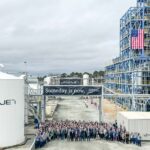
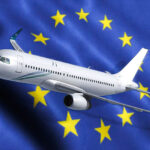
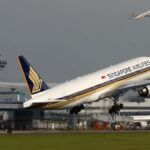
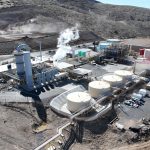
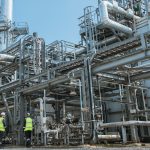
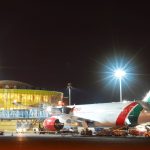
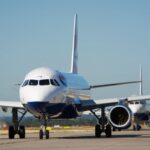
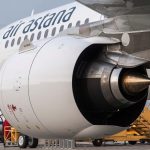

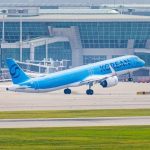


More News & Features
LanzaJet produces first next generation, ethanol-based SAF at flagship Freedom Pines refinery
European Commission announces Sustainable Transport Investment Plan to advance low-and-no-carbon fuels
XCF plans three new Australian SAF plants, while Wagner and FlyOro activate blending facility
UK government starts new consultation on SAF revenue certainty mechanism
African Development Bank and Japanese industrialist unite to explore SAF production in Africa
LanzaJet and KMG agree to progress SAF production project in Kazakhstan